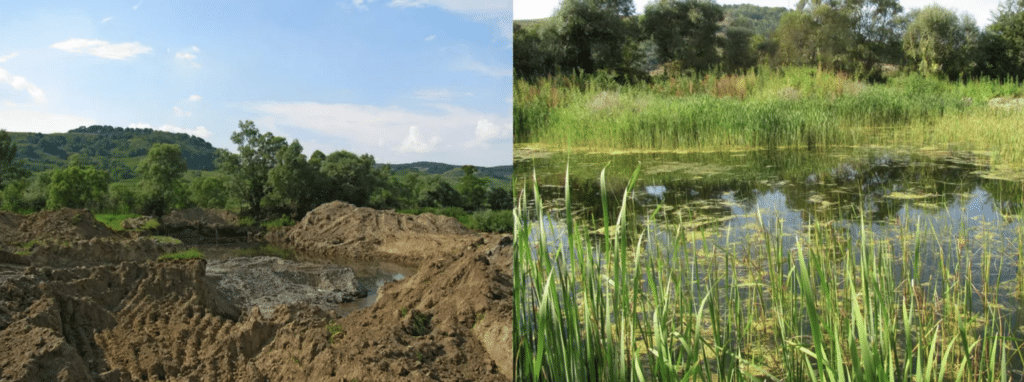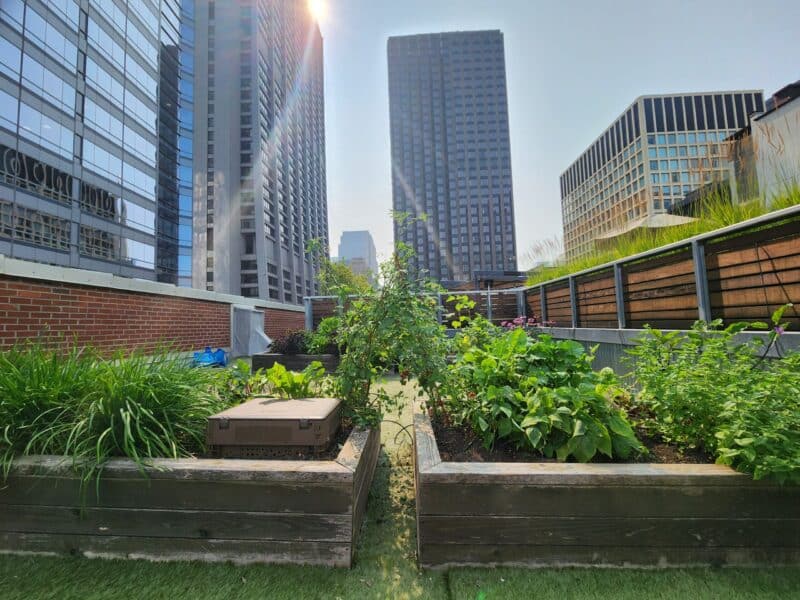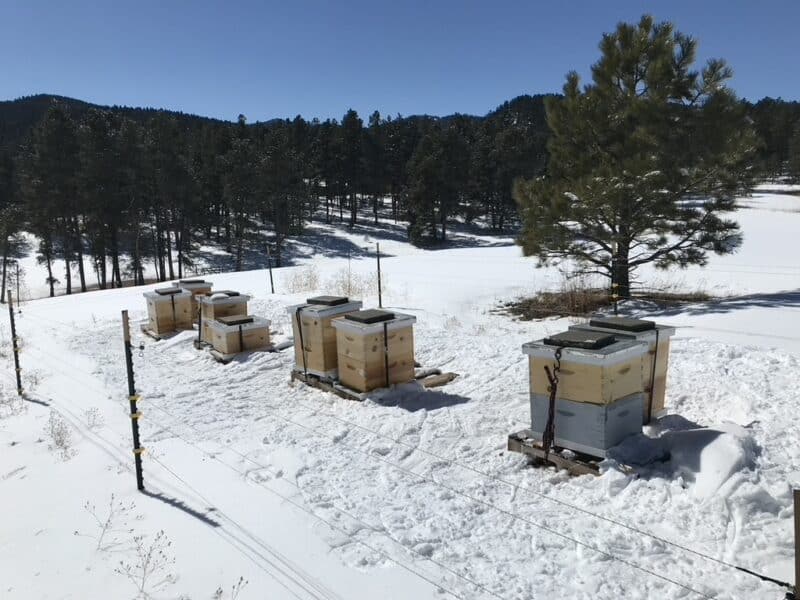Contents:
- What is Habitat Restoration?
- What is Habitat Loss?
- Historical Background of Habitat Restoration
- Why is Habitat Restoration Important?
- Habitat Restoration Methods
- How can Habitat Restoration Support Corporate Sustainability Initiatives?
- How can Pollinator Programs Support Habitat Restoration?
- FAQs
Climate change, industrialization, and increasing human population have had drastic effects on our planet. We can see these impacts in our wetlands, tundras, deserts, forests, grasslands, oceans and beyond. Humanity is currently using the equivalent of 1.75 Earths to maintain our current way of life, and the ecosystems of our planet cannot keep up with our demands.
~The TNFD is the first sustainability reporting framework specifically designed for biodiversity and nature-related issues. Download our white paper to learn how it’s prompting businesses to take decisive action~
According to the United Nations, between 2015 and 2020, we lost approximately 10 million hectares of forests (an area the size of Iceland) per year, and globally more than two thirds of our ocean ecosystems are now damaged, degraded or modified.
This loss of ecosystems and species leads to the loss of benefits for people and nature. From an economic perspective, it is estimated that $10 trillion in global GDP could be lost by 2050 if ecosystem services continue to decline.
Habitat restoration, along with endangered species protection, is a critical initiative necessary to combat ecological degradation and mitigate the harmful effects of climate change.
What is Habitat Restoration?
Habitat restoration is defined by the UN as “the process of halting and reversing degradation, resulting in improved ecosystem services and recovered biodiversity. Ecosystem restoration encompasses a wide continuum of practices, depending on local conditions and societal choice.” Restoration allows sites to once again provide food and shelter for wildlife, as well as perform ecological services such as reducing runoff, increasing water filtration rates, improving carbon sequestration, and more.
Now, the realities of our modern day mean that returning natural areas to some idealized state of the past is an impossible goal. We can’t turn Washington, D.C. back into a wetland, or any of our other metropolitan areas back to their original state. The goal of habitat restoration is to correct or mitigate harmful human impacts and promote diverse, resilient natural areas that will thrive now and in the future.
These restored landscapes are important not just because of their beauty or biodiversity, but because they provide essential ecosystem services – clean air and water, flood control, fertile soil, provision of natural resources, etc.
When habitats cannot be restored to their original size or condition, smaller measures can be taken to provide for the wildlife and the ecosystem as best we can. For example: we may not be able to uproot our highways, but we can build natural bridges over them so wildlife may cross. Many of the most common restoration activities include tree planting, coral rehabilitation, forest rewilding, invasive species eradication, or green space creation. These measures all combat habitat loss in their own ways.
What is Habitat Loss?
Habitat loss is pretty self-explanatory – it’s the reduction or destruction of spaces where a particular species, or a group of species, can thrive. Urbanization, deforestation, resource extraction, agriculture, trawling, and the release of pollutants have all contributed to habitat loss. Habitat loss can also occur due to environmental changes or disasters, such as volcanic eruptions, wildfires, tsunamis, or changes in climate or sea level.
The numbers and statistics of habitat loss and environmental degradation are staggering. Here are a few facts that put the scale of this issue into perspective:
- The equivalent of 130 Yellowstone National Parks — more than 290 million acres — of grasslands have been converted to agriculture in North America.
- Around one-third of the world’s farmland is degraded.
- The International Union for Conservation of Nature (IUCN) Red List of Threatened Species lists over 8,400 species as critically endangered and nearly 30,000 species as endangered or vulnerable.
- The World Wildlife Fund’s 2022 Living Planet Report found that wildlife populations have declined by an average of 69 percent since 1970.
- The IPBES estimates that one million animal and plant species are now threatened with extinction.
- Forest cover fell by almost 100 million hectares from 2000 to 2020.
- 1.3 million square miles of habitat will be converted to farmland by 2050.
- 75 percent of the Earth’s land areas are degraded, including 85 percent of wetland areas.
- Less than 25% of the Earth’s land surface has escaped substantial impacts of human activity – and by 2050, IPBES experts estimate this will have fallen to less than 10%.
Habitat loss can be categorized into three main buckets: Destruction, Fragmentation, and Degradation.
Habitat destruction is caused by filling in wetlands, dredging rivers, logging, trawling, developing land for urbanization, and converting wild lands into farmland.
Habitat fragmentation is the segmentation of natural habitats, creating fragments that may not be large or connected enough to support the species that once thrived in the larger territory. Fragmentation is caused by roads, urban development, dams, water diversions, etc. Habitat fragmentation does not just impact the species that live in the area year-round; it also makes it difficult for migratory species to find places to rest and feed along their migration routes.
Habitat degradation is the consequence of pollution, invasive species, and disruption of ecosystem processes. It results in a habitat that can no longer support native wildlife.
Historical Background of Habitat Restoration

Habitat restoration is a relatively recent practice. It began in the early 1900s when people, such as renowned conservationist Aldo Leopold, began promoting the idea. Theodore Roosevelt was another significant conservationist; after he became president in 1901, he used his authority to protect approximately 230 million acres of public land. He created the United States Forest Service (USFS) and established the Antiquities Act of 1906 to grant legal protection to cultural or natural resources of historic or scientific interest.
Franklin D. Roosevelt, Teddy Roosevelt’s fifth cousin, carried on the conservation efforts during his presidency by signing into law the Pittman-Robertson Act of 1937. The act directed taxes on firearms and ammunition sales back to the states to fund the selection, restoration, and improvement of wildlife habitat, as well as wildlife research.
30 years after the Pittman-Robertson Act, concern for the bald eagle’s dramatic decrease in population (due to hunting, habitat loss, and the toxic pesticide DDT) motivated Congress to pass the Endangered Species Preservation Act. After a series of amendments, their original framework expanded and evolved into the Endangered Species Act, which was signed into law by Richard Nixon in 1973.
Why is Habitat Restoration important?

Habitat restoration is a crucial part of combating the negative anthropogenic impacts upon our planet. It is important that we repair the areas that have been subjected to habitat degradation; it is one of the primary factors involved in causing species of plants and animals to be threatened with extinction. The complexities of the food web mean that one species’ extinction has a ripple effect and threatens the status of many other species. Eventually, this negative feedback loop will have disastrous effects on our global food system and our planet’s biodiversity.
Habitat restoration is a vital piece of preventing food system collapse – it is estimated that 60 percent of expected species extinctions could be avoided through the effective restoration of 15 percent of converted lands. Beyond simply preventing species extinction, protecting ecosystems and restoring those that have been damaged has the potential to contribute to over one third of the total climate change mitigation required by 2030.
Environmental degradation impacts the health and population of plants and animals, the availability of natural resources, the quality of our soil, water, and air, and the quality of life of all of us who live on the Earth. According to the United Nations Environment Programme (UNEP), ecosystem degradation affects the well-being of an estimated 3.2 billion people, or 40 percent of the world’s population.
To ensure that future generations inherit a safe, healthy, and thriving planet, we must take action on individual, community, national, and global levels.
Habitat Restoration Methods

Restoration projects differ in their objectives and their methods of achieving their goals. Some projects aim to establish ecosystems made up of native species, while others try to restore ecosystem services such as pollination or erosion control. Some examples of different kinds of restoration include:
Revegetation:
This is the establishment of vegetation on sites where it has been previously lost. Revegetation can serve as erosion control to minimize flooding or damage to riparian zones – the areas that occur along the edges of rivers, streams, lakes, and other bodies of water. It can also be a means to promote biodiversity by introducing a variety of native flora back into its habitat.
Habitat Enhancement:
The process of increasing the suitability of a site as a habitat for wild flora and fauna is known as habitat enhancement. According to the Onondaga Environmental Institute, projects of this type aim to “improve the environment to ensure the survival of inhabitants, enhance the reproduction of specific populations, and strengthen overall ecosystem integrity.” An example of this would be planting trees; trees provide food and shelter for wildlife, carbon sequestration for the air, erosion control with their roots, improved soil quality, and many more aspects that improve an ecosystem.
Remediation:
Remediation is the act of stopping, reducing, or removing factors that are harming an ecosystem. In a sense, remediation is the first step of habitat restoration; by getting rid of what is contributing to the degradation or destruction of an area, you ensure that the final restored habitat will continue to thrive into the future. These factors include pesticides, synthetic fertilizers, pollution, invasive species, and more. Practices that overexploit natural resources and negatively impact the ecosystem – such as overfishing, mining, oil fracking, and logging – could also be reduced or eliminated as a habitat restoration remediation project.
There are many different approaches to habitat restoration, including reforestation, riparian buffering, prairie restoration, invasive species management, soil rehabilitation, and coral reef rebuilding.
How Can Habitat Restoration Strengthen Corporate Sustainability Initiatives?
At this point in our global economy, it is expected that large companies and their stakeholders invest properly and proudly towards a more sustainable future. It is the inherent responsibility of large organizations to affect positive change both locally and globally, all while adapting to new practices of doing so. Now, more than ever, it’s important to educate one another on the ways to support corporate sustainability targets, align with global goals, and make an impact on our environment.
One incredibly effective way to do this is by promoting biodiversity; investing in biodiversity is one of many ways that businesses and citizens can ensure that our ecosystem and agriculture thrive. Another way is making land use more sustainable and environmentally-friendly. Habitat restoration projects can be oriented to achieve a number of different goals, and thus are excellent methods of targeting specific aspects of a corporate sustainability initiative.
How Can Pollinator Programs Support Habitat Restoration?
Pollination is one of the critical ecosystem services that is threatened by habitat loss. Bringing bees to your property, particularly scientifically-managed beehives that contribute data to pollinator health research, helps to promote the growth of a healthy ecosystem.
Pollinator-friendly landscaping is aligned with many of the goals of habitat restoration. Pollinators, such as honey bees, need a diverse diet in order to get all the nutrients they need. This means supporting local biodiversity by installing many different species and types of vegetation, flowers, trees, and other plants on your property. Increasing biodiversity of the flora positively impacts the fertility of the soil, and provides food and shelter for other wildlife.
Native pollinators, such as mason bees, carpenter bees, bumble bees, and leafcutter bees, thrive when they have native plants to forage from. Conserving and installing native plant populations aids in returning a habitat to a close approximation of its ecological condition prior to development. It also helps to promote biodiversity by establishing a more complex food web.
When you have pollinators on your property providing pollination services, you can more successfully grow fruits and vegetables. By growing your own food, you can lower your consumption of produce grown by commercial agriculture. Our global food system is the primary driver of biodiversity loss, and agricultural expansion is said to account for 70 percent of the projected loss of terrestrial biodiversity.
Minimizing pesticide usage is another pollinator-friendly landscaping strategy. Pesticides, synthetic fertilizers, herbicides, and insecticides are all detrimental to pollinator health. According to the Xerces Society, the effects of pesticides on pollinators include “removing important floral resources, causing subtle yet concerning effects on reproduction, navigation and memory, and high-profile incidents when pesticides kill bees.”
Interested in utilizing scientifically-managed beehives to contribute to habitat restoration? Click HERE to connect with one of our experts.
FAQ
Q: What is habitat restoration?
A: Habitat restoration is the rehabilitation of an ecosystem that has been degraded or damaged to a close approximation of its original state prior to disturbance.
Q: What are examples of habitat restoration?
A: Reforestation, planting a native wildflower garden, invasive species removal, revegetation of riparian buffer zones, and coral reef rebuilding.
Q: Why is habitat restoration important?
A: Habitat destruction, the problem habitat restoration aims to resolve, is the primary factor involved in causing species of plants and animals to be threatened with extinction.
Q: How does a pollinator program support habitat restoration?
A: Bringing pollinators to your property promotes local biodiversity, and committing to pollinator-friendly landscaping makes ecosystems healthier, more supportive of wildlife, and more capable of providing important ecosystem services.








